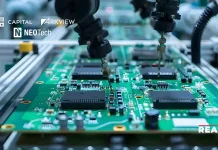Flex Logix® Technologies, Inc., the leading supplier of embedded FPGA (eFPGA) IP and reconfigurable DSP/SDR/AI solutions, announced additional applications for embedded FPGA to improve the value proposition for AI Accelerators.
First, memory bandwidth – the scarcest resource in AI Accelerators, especially in the cloud, where model weights/parameters exceed 100 billion and HBM memory is expensive and scarce. Techniques for saving memory bandwidth are evolving faster than hardware.
“Embedded FPGA (eFPGA) can enable innovations in sub-INT4 data and weight representations (e.g. ternary, 2 bit, 3 bit, mixed or mat-mul free) to be converted on the fly by eFPGA into existing TPUs,” said Cheng Wang, Flex Logix CTO & SVP Software + Architecture. “This can also be mixed with innovations in sparsity that can further reduce the memory bandwidth requirements. Aggregate memory bandwidth reduction can be up to 16x.”
Also Read: Elo Launches Revolutionary 04- and 54-Series Touchscreen Digital Signage
Second, higher performance. AI models are rapidly evolving. With most TPUs, new operators and activation functions must be handled by a much slower processor. eFPGA can be used to run the new operators and activation functions at much higher performance.
Flex Logix is already using these concepts in its own InferX AI optimized for edge vision AI models and DSP.
Flex Logix is a reconfigurable computing company providing leading edge eFPGA, DSP/SDR and AI Inference solutions for semiconductor and systems companies. Flex Logix eFPGA enables volume FPGA users to integrate the FPGA into their companion SoC, resulting in a 5-10x reduction in the cost and power of the FPGA and increasing compute density which is critical for communications, networking, data centers, microcontrollers and others. Its scalable DSP/SDR/AI is the most efficient, providing much higher inference throughput per square millimeter and per watt. Flex Logix supports process nodes from 180nm to 7nm, with 5nm, 3nm and 18A in development.
SOURCE: PRNewswire




